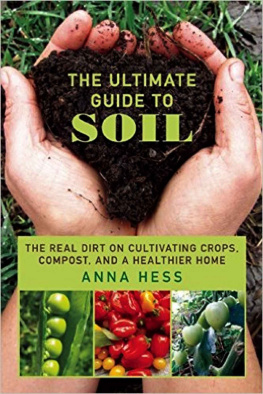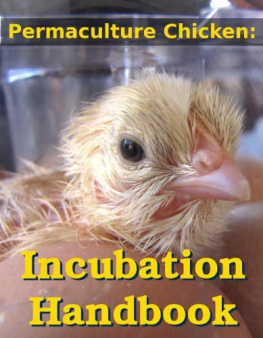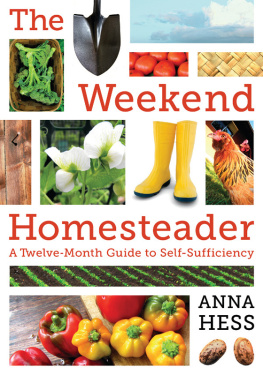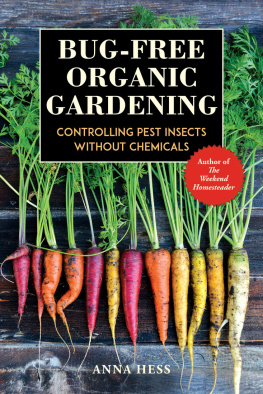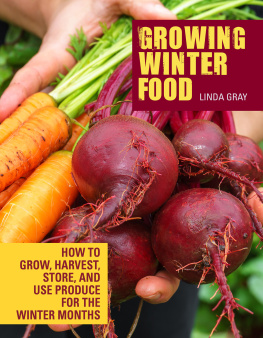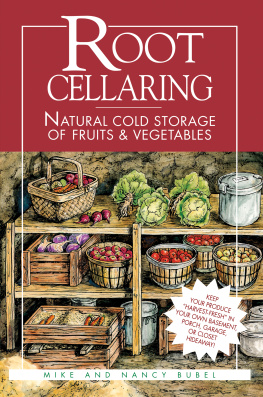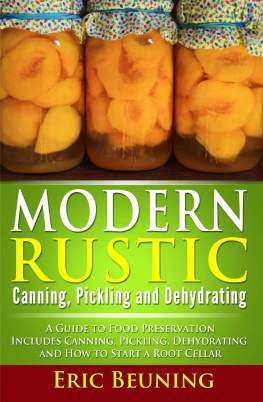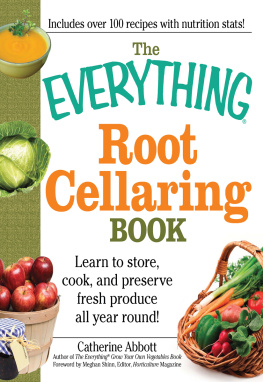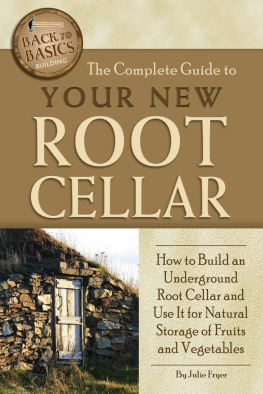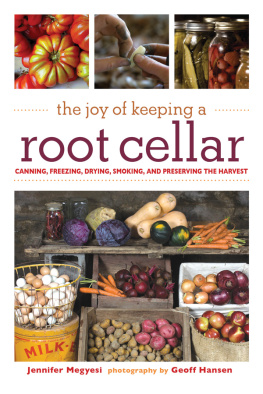$10 Root Cellar
And Other Low-Cost Methods of Growing, Storing, and Using Root Vegetables
Volume 3 in the Modern Simplicity series
by Anna Hess
Copyright 2013 by Anna Hess
All rights reserved.
No part of this book may be reproduced in any form or by any electronic or mechanical means including information storage and retrieval systems, without permission in writing from the author. The only exception is by a reviewer, who may quote short excerpts in a review.
Visit my blog at www.waldeneffect.org or read more about my books at www.wetknee.com.
Cover photo by Stephen Ausmus, U.S. Department of Agriculture.
Contents
Introduction
Why roots?
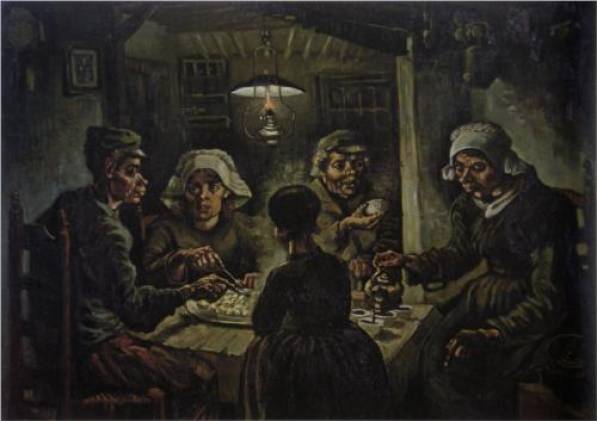
The Potato Eaters , by Vincent Van Gogh, 1885, is currently located in the Van Gogh Museum in Amsterdam.
You see, I really have wanted to make it so that people get the idea that these folk, who are eating their potatoes by the light of their little lamp, have tilled the earth themselves with these hands they are putting in the dish, and so it speaks of manual labor andthat they have thus honestly earned their food. I wanted it to give the idea of a wholly different way of life from ourscivilized people."
Vincent Van Gogh, in an 1885 letter about his painting The Potato Eaters
The perceived link between peasants and potatoes was widespread during the nineteenth century and caused many upper-crust English people to eschew the lowly spud. Over time, the stigma associated with root crops seems to have vanished, which is lucky for us since potatoes, carrots, and other roots make such useful additions to the self-sufficient homesteader's garden and pantry.
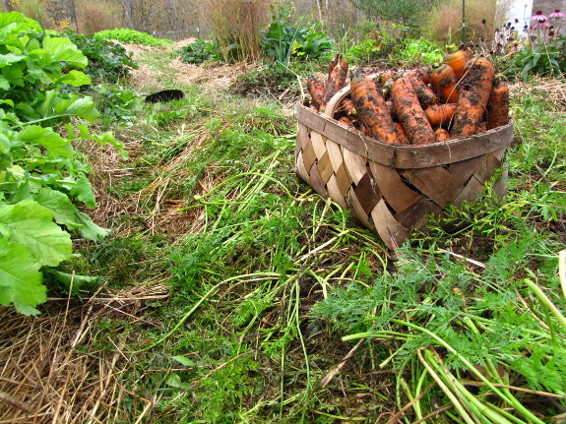
Root vegetables are easy to grow and provide plenty of calories per square foot.
If you're interested in maximizing the number of calories you can grow in a small space, roots often win over grains, and roots have the additional benefit that they don't require threshing and winnowing. In addition, if stored properly, root vegetables will often last all winter, providing vitamins that quickly disappear from frozen, canned, and dried foods.
On a more personal note, my husband and I found that once we started growing all of our own vegetables, carrot sticks became a winter staple since we yearned for the crunch of something fresh in January, February, and March. If your homesteading experience is anything like ours, you'll quickly find at least one (or more likely several) roots that make your life easier, tastier, and cheaper. Each year, you'll harvest more and more roots, and will soon will be faced with the conundrum of where to store your every-growing bounty over the winter. The purpose of this book is to make the storage of your root crops so simple and cheap that even Van Gogh's Potato Eaters could afford to follow suit.
How to store vegetables without canning, freezing, or drying
Types of storage vegetables

Storage vegetables (including roots, winter squash, and some others) are crops that will last for several months without canning, freezing, or drying. The table above breaks up common storage vegetables into two categories: warm, dry storers, and cool, moist storers. This is obviously a generalization since carrots like it wetter than cabbages and pumpkins like it warmer than onions, but most homesteaders will be doing well to simply find one cool, damp spot and one warm, dry spot for their storage crops.
Warm, dry storers can be maintained over the winter in a slightly cool part of your house that doesn't freeze but also isn't excessively wet. We keep butternut squash and garlic on shelves right in the kitchen, and they carry us through until spring. Although I won't be writing anything else about warm, dry storers in this book, I do heartily recommend these crops, having found that sweet potatoes generally produce more calories per square foot than white potatoes in our neck of the woods. To read more about vegetables that can be stored on the kitchen shelf, check out Weekend Homesteader: October.
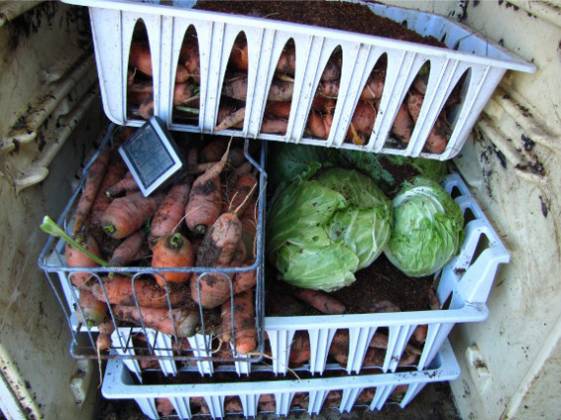
Inside our refrigerator root cellar in late December, carrots are crisper and sweeter than they ever were at this time of year in the electrified fridge.
Cool, moist storers are the type of vegetables I'll focus on for the rest of this book since they keep well in a root cellar. Although each vegetable has slightly different optimal temperature and humidity conditions, most prefer levels just above freezing when the air is nearly saturated with water.
In a pinch, you can keep cool, moist storers for a little while in a closet or other low-temperature part of your house, but they'll quickly begin to shrivel. Alternatively, if you only have a few, potatoes and carrots store well in the crisper drawer of the fridge covered with a damp dish towel. Be sure to re-moisten the towel once a week, or whenever you take a vegetable out of the drawer.
As you become more self-sufficient, though, you'll soon run out of places to keep cool, moist storers in the average house. Luckily, a low-energy solution existsthe root cellar. If you dig deep enough and provide adequate ventilation, the earth provides cool and moist conditions with no work on your part, and adequate air flow keeps molds from forming despite the damp. Finally, screening all openings prevents incursions by critters who would gladly eat your hard-earned food. If you're careful to keep these design factors in mind, a root cellar can maintain roots that like cool, moist conditions (along with cabbages, many fruits, and even scionwood for fruit tree grafting) in peak condition all winter long.
The trouble is that a quality root cellar usually costs thousands (or at least hundreds) of dollars to construct, making root crops much less economical. This book suggests alternative ways to maintain cool, moist conditions for your overwintering root crops at a significantly lower price.
Introducing the refrigerator root cellar
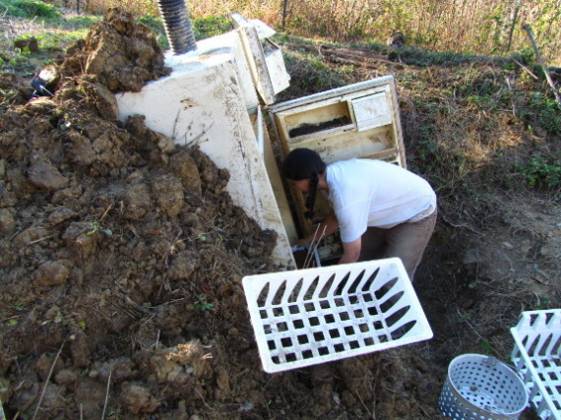
A $10 structure gives us room to store plenty of winter carrots, cabbages, and potatoes with little expenditure of electricity.
My husband and I started our homestead from scratch. With gardens to plant, water lines to bury, chickens to pasture, and a trailer to bring up to living standards, we didn't have much time or money to put toward a root cellar.
At first, the lack was no big deal. Even though our gardens have always been just on the edge of too big for me to handle, it took us six years to reach the point where we were growing enough carrots and other storage vegetables to have fresh food throughout the winter. In the early years, I had no problem storing any winter crops that liked it cool and moist in our normal refrigerator.
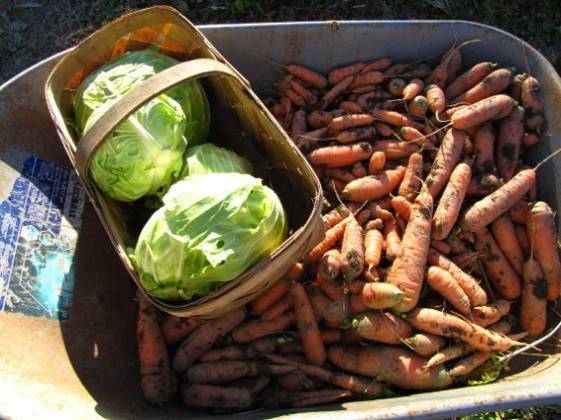
Part of the 2012 storage vegetable harvest.
Next page

